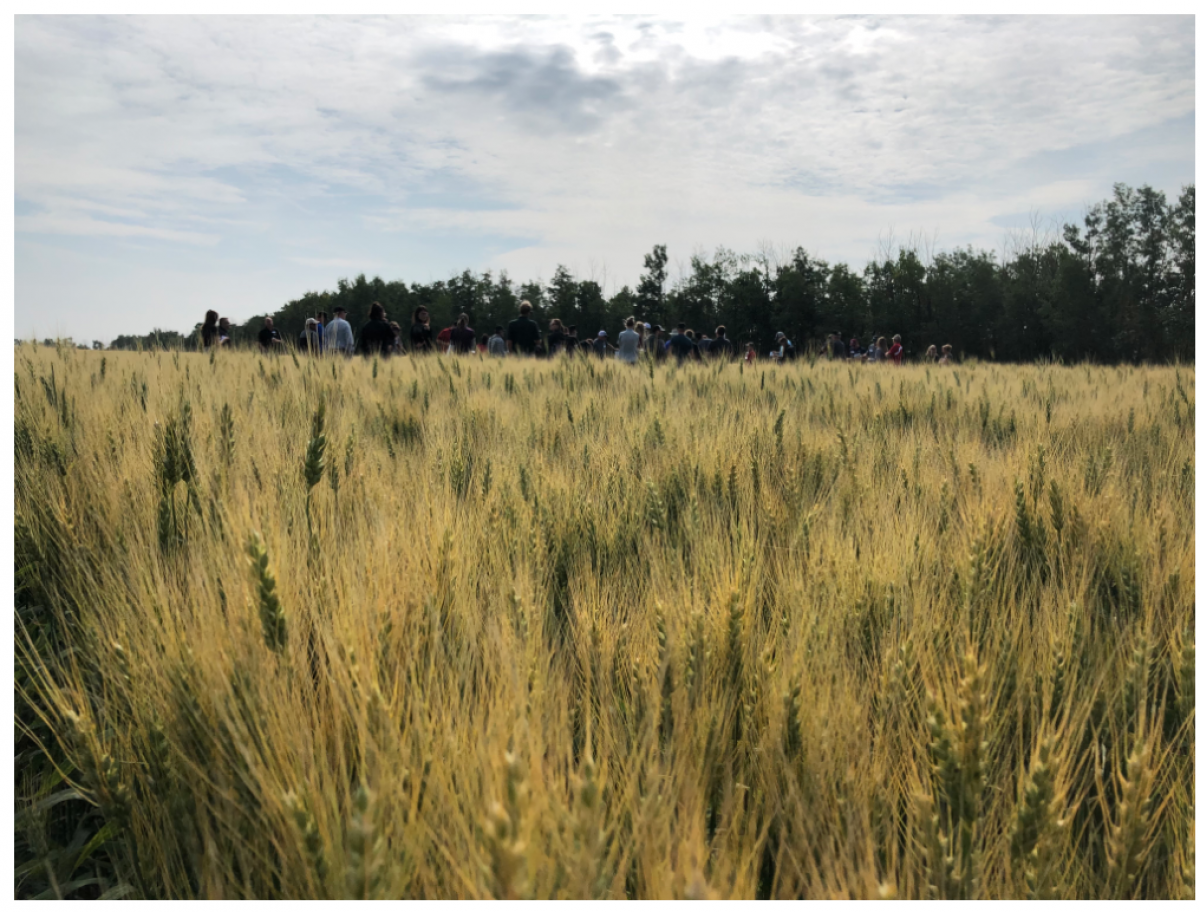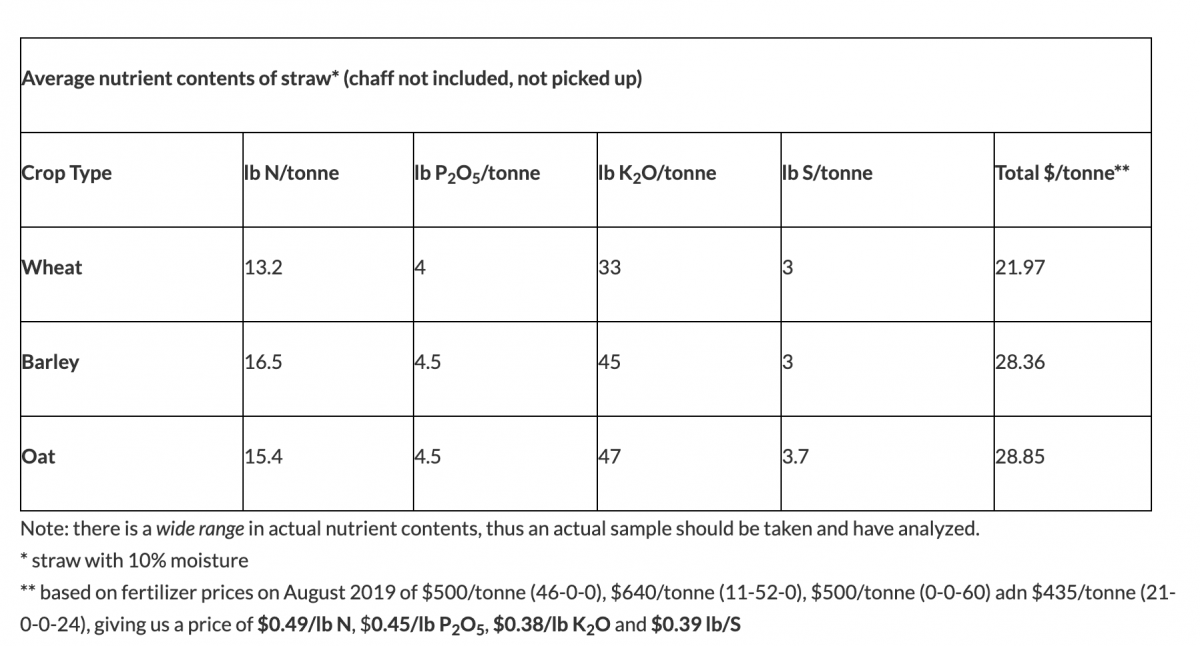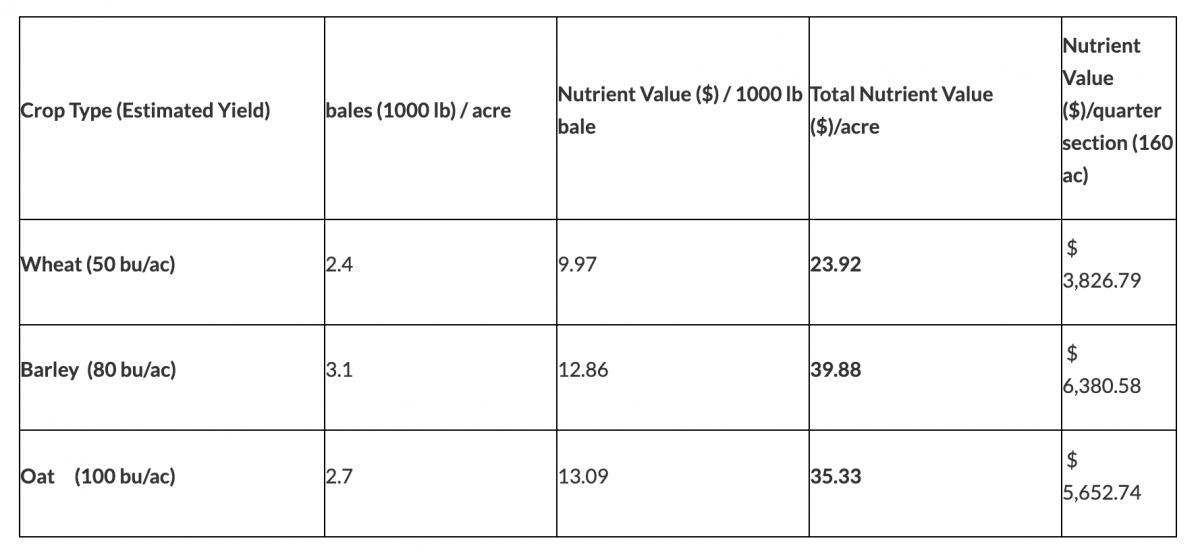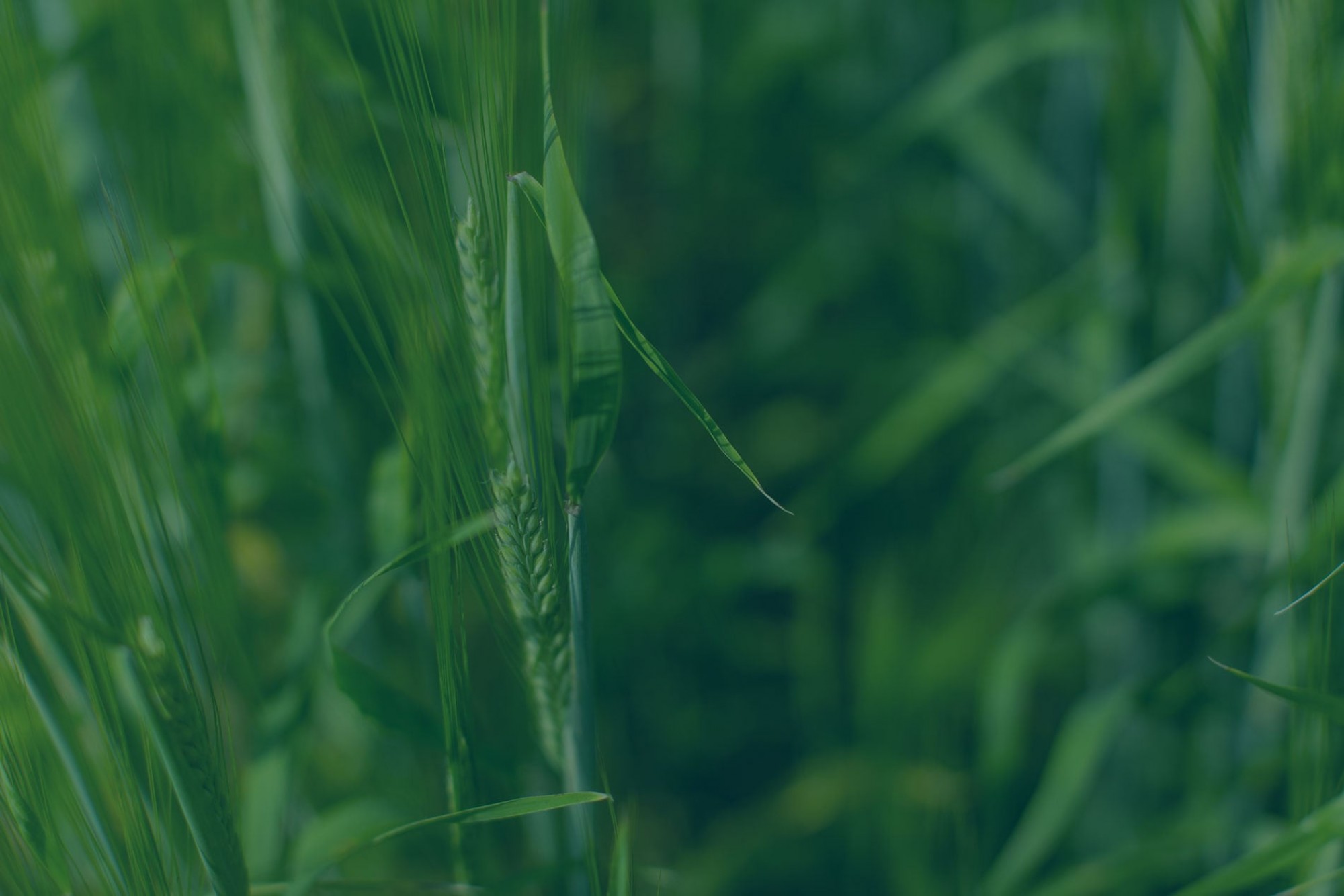Cereal Straw: hidden value on your farm
Posted by Jeremy Boychyn | MSc P.Ag | Agronomy Research Extension Specialist

Before your combine gets ahead of your thinking on whether to keep your straw (shredded and spread where it will lay and decompose) or allow someone to buy it straight out the back of your combine, you should be aware of the nutrient value it offers. Straw is not just an “end-product” of your crop that needs to be removed. It offers nutrients and minerals to your land. Straw contains nutrients and minerals that support the production of a crop throughout the summer months and will be released through mineralization as the straw degrades. Only about 10-15% will be made available in time for the following crop, even slower for minimum-till or no-till situations, but eventually nutrients in a cereal residue will be available.
Assuming an average of 50 bu/ac grain yield for wheat, we would average 2.4 thousand-pound bales per acre. Using the chart below, which uses estimated nutrient values (only to be replaced with values reached by sending in samples to a laboratory for a concrete answer on its value), we can see that in a typical quarter section (160 acres), there is significant value for wheat straw that will be lost if we sell it. You should be aware of is value, about $3,800 per quarter section of land. At least plan to be ready to recuperate the loss by the selling price for straw.


Barley straw is more valuable per acre than that of wheat or oat straw. Barley and oat straw is in higher demand by livestock producers for bedding and some animal feed. Barley straw especially contains more nutrients per unit of straw. A quarter section of barley straw would be worth $6,380 based on the table above.
The cereal straw you will have in your field has significant value. Be sure if you sell it that you get the value for it, as it has a hidden value on your farm.
Originally posted in September 2019 by Clair Langlois, former provincial cereals specialist.

